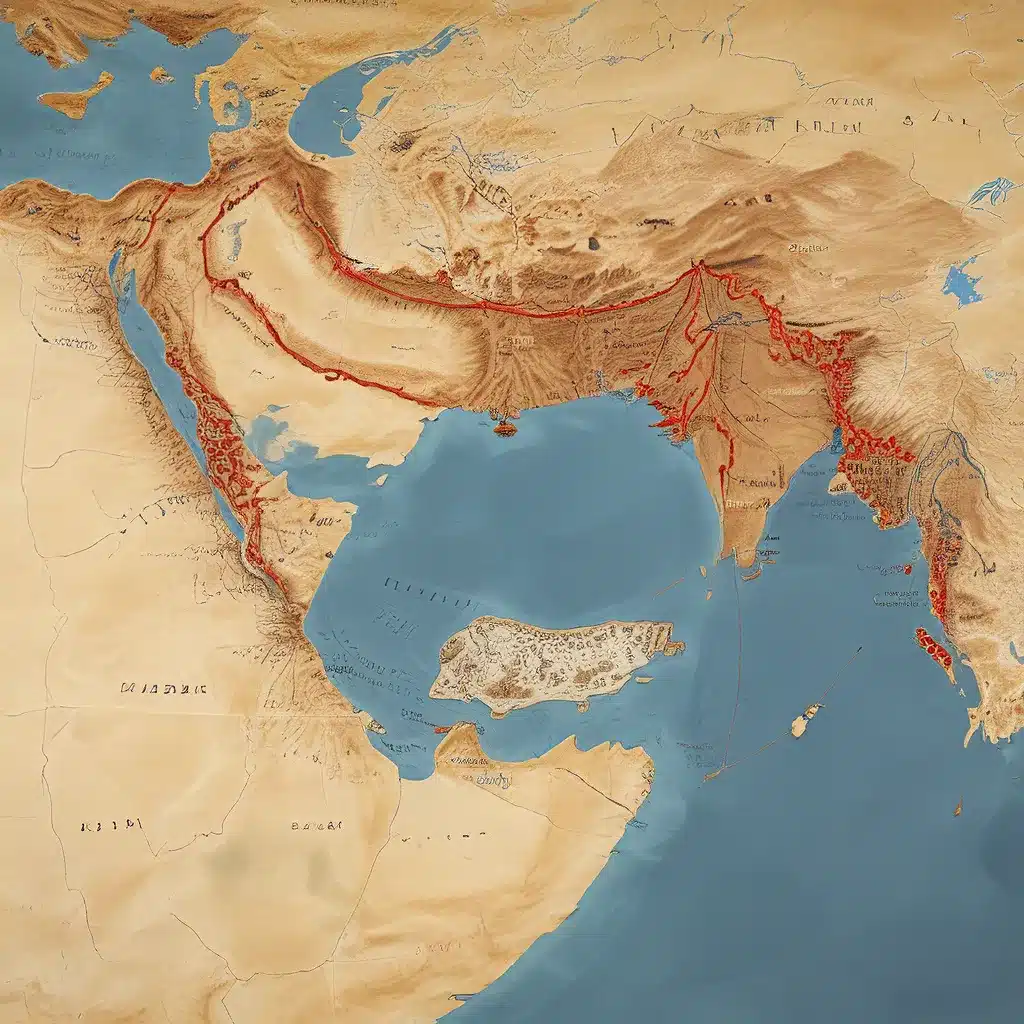
Across the vast expanse of our planet, hidden beneath the sands of time, lie the remnants of ancient civilizations that once flourished through the power of trade. One such remarkable route, the Via Maris, also known as the “Way of the Sea,” serves as a captivating testament to the interconnectedness of the ancient world.
The Significance of the Via Maris
The Via Maris was a strategic trade route that connected the ancient civilizations of Egypt, Assyria, Babylon, and the Levant region. Extending from the Nile Delta in the south to Mesopotamia in the north, this vital thoroughfare facilitated the exchange of goods, ideas, and cultural influences that shaped the development of numerous societies along its path.
The significance of the Via Maris can be traced back to biblical times, where it is referred to as the “Way of the Sea” in the Old Testament. This ancient trade route played a crucial role in the lives of the Israelites, connecting them to neighboring nations and enabling the exchange of commodities, knowledge, and religious practices.
A Gateway to the Ancient World
The cities that dotted the Via Maris served as thriving hubs of commerce and cultural exchange. From the bustling port city of Gaza in the south to the strategic fortress of Caesarea in the north, each settlement along the route held its own unique significance, acting as a gateway for the flow of spices, silk, precious metals, and other valuable goods.
Excavations at archaeological sites like Tel Megiddo, Hazor, and Caesarea have unearthed a wealth of artifacts and structures that provide invaluable insights into the daily lives, architectural achievements, and material culture of the people who inhabited these ancient cities. These discoveries shed light on the resilience and adaptability of the traders and travelers who navigated the challenges of the Via Maris, from the harsh desert landscapes to the unpredictable coastal regions.
A Tapestry of Civilizations
The Via Maris not only facilitated the exchange of physical goods but also cultural elements, ideas, and religious practices. As merchants and travelers moved along the route, they brought with them their languages, customs, and traditions, leading to the assimilation and fusion of diverse cultural influences.
The spice trade was particularly significant, with the transportation of commodities like cinnamon, pepper, and frankincense from the Far East to the Mediterranean region shaping the economies and culinary practices of civilizations along the Via Maris. The route also served as a channel for the dissemination of knowledge, allowing the spread of technological advancements, architectural styles, and artistic expressions.
Navigating the Challenges of the Via Maris
While the Via Maris offered numerous opportunities for trade and cultural exchange, it was not without its challenges. Traders and travelers had to navigate through diverse terrains, including deserts, mountains, and coastal areas, each presenting its own unique obstacles and risks.
The arid Negev Desert along the route required careful planning and resource management, as caravans had to rely on oases and strategically located water wells for survival. Coastal regions, on the other hand, were vulnerable to pirate attacks and treacherous storms, requiring merchants to take precautions to safeguard their valuable cargoes.
Political instability in certain regions also posed a threat to the safety of the trade route, as conflicts between empires and local powers could disrupt the flow of goods and commerce. Despite these challenges, the traders and travelers who braved the uncertainties of the Via Maris demonstrated remarkable resilience and adaptability, driven by the pursuit of economic opportunities and cultural enrichment.
The Legacy of the Via Maris
The legacy of the Via Maris continues to resonate in the modern world, influencing trade routes, transportation networks, and the cultural identities of the regions it once traversed. Many of the major highways and railways in the region follow the path of the ancient trade route, connecting countries and fostering economic integration.
Furthermore, the cultural and religious heritage associated with the Via Maris remains a significant part of the identity of the region. The presence of important religious sites along the route, such as Jerusalem and Bethlehem, attracts pilgrims and reinforces the spiritual significance of the ancient trade route.
For those seeking to explore the rich history and stories of the Via Maris, a carefully planned journey can offer a remarkable opportunity to step back in time and immerse oneself in the captivating tapestry of civilizations, commerce, and connections that shaped the ancient world.
Uncovering the Secrets of the Via Maris
The Via Maris is not only a historic trade route but also a testament to the human spirit of exploration, resilience, and cultural exchange. As we delve deeper into the archaeological treasures and narratives associated with this ancient thoroughfare, we unveil a compelling and often overlooked chapter of history that has profoundly influenced the development of civilizations across the Mediterranean and beyond.
Through the dedicated efforts of historians, archaeologists, and cultural preservationists, the untold stories of the Via Maris are gradually being brought to light, shedding new light on the complexities of the ancient world and the enduring impact of trade and cultural exchange. By exploring the remnants and narratives of this historic route, we can gain a richer understanding of the foundations upon which our modern world was built.
The journey along the Via Maris invites us to step into the footsteps of the merchants, caravans, and travelers who once traversed this remarkable trade route, unlocking a captivating tapestry of civilizations, commerce, and connections that continue to shape our understanding of the past and its lasting influence on the present. As we uncover the untold histories of the Via Maris, we are reminded of the power of trade and cultural exchange in shaping the course of human history.


